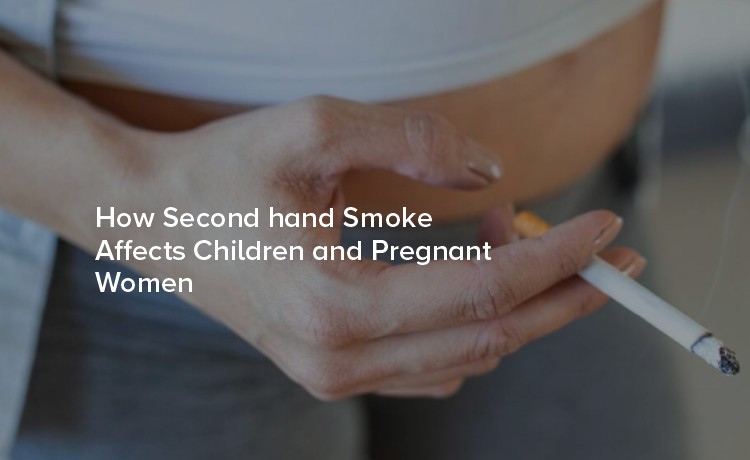
Secondhand smoke doesn’t just affect the smoker. It’s a silent, invisible threat that impacts those around them, especially children and pregnant women. From breathing difficulties to long-term developmental issues, the dangers of secondhand smoke are far-reaching and often underestimated.
Secondhand smoke, also known as environmental tobacco smoke, is the combination of smoke emitted from the burning end of a cigarette and the smoke exhaled by a smoker. It contains over 7,000 chemicals, including harmful substances like formaldehyde, benzene, and carbon monoxide. According to the CDC, hundreds of these chemicals are toxic, and at least 70 are known to cause cancer.
While the immediate effects can include asthma attacks or respiratory discomfort in those nearby, the ripple effects on vulnerable groups, such as children and pregnant women, can last a lifetime.
Children and unborn babies are more susceptible to secondhand smoke due to their underdeveloped respiratory and immune systems. Their growing tissues and organs are particularly vulnerable to the harmful chemicals in tobacco smoke, making it vital to eliminate their exposure to such hazardous environments.
1. Respiratory Illnesses
When children inhale secondhand smoke, it can wreak havoc on their still-developing lungs. Exposure often results in conditions such as chronic bronchitis, pneumonia, and increased frequency of asthma attacks.
Studies show that children exposed to secondhand smoke have lower lung function compared to their peers. This can also lead to long-term respiratory challenges that may persist well into adulthood.
2. Higher Risk of SIDS
Sudden Infant Death Syndrome (SIDS) is one of the most devastating impacts of secondhand smoke exposure for infants. Babies exposed to secondhand smoke are at a higher risk of SIDS due to the impairment of their respiratory and autonomic nervous systems caused by harmful chemicals.
3. Middle Ear Infections
Ear infections are another common consequence of exposure to secondhand smoke, especially in young children. The toxins can irritate the lining of the Eustachian tube, causing fluid build-up and recurrent infections.
4. Impact on Cognitive Development
Recent research links exposure to secondhand smoke to delays in cognitive and behavioral development in children. Memory issues, attention difficulties, and even lower IQ scores are some consequences of prolonged exposure to tobacco smoke during critical developmental periods.
1. Low Birth Weight
For pregnant women, exposure to secondhand smoke poses serious risks to their unborn child. Low birth weight is one of the most common concerns. Babies who weigh less at birth are more likely to face health complications, such as infections, developmental delays, and chronic conditions.
2. Preterm Delivery
Secondhand smoke exposure increases the risk of preterm delivery. Premature babies often have underdeveloped lungs, which can lead to respiratory distress and other health concerns early in life.
3. Congenital Malformations
Certain congenital issues, such as cleft palate or heart defects, have been associated with maternal exposure to secondhand smoke during pregnancy. The chemicals in tobacco smoke can affect fetal development, leading to such anomalies.
4. Miscarriage and Stillbirth
Exposure to secondhand smoke during pregnancy also raises the risk of miscarriage and stillbirth. The carbon monoxide and nicotine restrict oxygen supply to the fetus, which can have catastrophic consequences.
1. Create a Smoke-Free Home and Car
Establish firm, no-smoking policies in your home and car. Even cracking a window doesn’t provide enough ventilation to eliminate the harmful effects of secondhand smoke.
2. Speak Up in Social Situations
Don’t hesitate to request that others avoid smoking around you and your children. Your health and your family’s well-being should always come first.
3. Use Air Purifiers but Don’t Rely Solely on Them
While air purifiers can help reduce the concentration of pollutants, they can’t fully eliminate the thousands of toxins contained in secondhand smoke. A smoke-free environment remains the best solution.
4. Seek Resources and Support
Encourage smokers in your household to seek help in quitting. Various cessation tools and support groups are available to assist them in this life-changing decision.
When it comes to protecting your family’s health from the risks of secondhand smoke, Citizens Hospitals is here to help. Our team of health professionals is dedicated to offering personalized care and education for families looking to lead healthier, smoke-free lives. From prenatal care to pediatric support, we provide compassionate, expert care for every stage of life.
If you or a loved one is ready to adopt a healthier lifestyle, reach out to Citizens Hospitals today. Together, we can build a smoke-free and health-conscious future for your family.